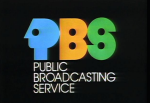
By Kieran Suckling in The Huffington Post – When many people think of America’s public lands, they think about pristine, wide-open spaces in the West. But lurking beneath them is a massive carbon bomb that we unleash at our own peril. A new report released Wednesday finds that unleased fossil fuels on public lands and offshore areas – publicly owned fossil fuels controlled by federal agencies – hold up to 450 billion tons of greenhouse gases. If we allow that coal, oil and natural gas to be developed, we’ll cripple America’s ability to meet its obligation to cut carbon and avoid the worst effects of the global climate crisis. That’s why it’s never been more clear that President Obama – and whoever comes after him in the White House – needs to pledge to ban new fossil fuel leases on U.S. public lands and offshore coastal areas.

By Daniel Faris in Truth Out – On a recent trip to Baltimore, I encountered something startling: a US city with a public transportation system that actually works. From buses to water taxis, Baltimore’s Charm City Circulator (or CCC) was established in 2010 by former mayor Sheila Dixon. The program boasts a fleet of around 30 vehicles that shuttle more than 3,000 daily riders along four color-coded routes meeting over 100 city stops. The service has a smartphone app, it consists entirely of hybrid vehicles, and the fare is nonexistent. That’s right: the buses are 100 percent free. I thought, Surely there has to be a catch. Then I stepped back and asked myself: Why? All across the world, there are close to100 cities that offer free public transportation, and about one fifth of them are in the US. So what do these cities know that the rest of the country doesn’t? Is the public transportation system in the US really as bad as everyone says? And if so, why?

By Timothy Ginty in RoarMag – In February 2009, after the Spanish government had shown itself incapable of enforcing Article 47 of the Spanish Constitution — declaring that “all Spaniards have the right to enjoy decent and adequate housing” — a citizens’ assembly was held in Barcelona to establish the Platform for People Affected by Mortgages, or the PAH (Spanish: Plataforma de Afectados por la Hipoteca), a social movement which would wait for neither government action nor market corrections for this right to be enforced. The PAH’s immediate aims are simple — the prevention of the systematic eviction of tens of thousands of debtors across Spain — but its larger dream is bolder: the achievement of the socio-economic conditions in which the human right to housing may be secure.

For a public radio service, NPR is notoriously known for its lack of diversity within its staff, audience and guests invited onto their shows—problems that NPR has itself acknowledged (6/30/14). A new FAIR study finds thatNPR’s diversity problem also extends into the board of trustees of its most popular member stations: Two out of three board members are male, and nearly three out of four are non-Latino whites. Fully three out of every four trustees of the top NPR affiliates belong to the corporate elite. While a majority of the board is populated by NPR station managers with backgrounds in public media, the rest of the board members have strong ties to the corporate sector. This includes NPR CEO Jarl Mohn, who has an extensive background in commercial media, having held executive positions within E! Entertainment, MTV and VH1.

In early April, the US Postal Service won. They got a Federal Judge to dismiss, without prejudice, Berkeley’s lawsuit against the sale of the downtown Berkeley Post Office. Funny thing though, nobody in Berkeley thinks the Post Service won, and for Postal Service management it was at best a pyrrhic victory. In order for them to extract that ruling, they had to attest that the 2000 Allston Way building was no longer for sale, and aver that they had rescinded their decision to move services out of the building. In an amusing twist Judge Alsup had asked the Postal Service lawyers during oral arguments whether they would rescind their “Final Determination Regarding Relocation of Relocation Services in Berkeley.”

Education is no longer a public good but a private right, just as critical thinking is no longer a fundamental necessity for creating an engaged and socially responsible citizenship. Neoliberalism’s disdain for the social is no longer a quote made famous by Margaret Thatcher. The public sphere is now replaced by private interests, and unbridled individualism rails against any viable notion of solidarity that might inform the vibrancy of struggle, change, and an expansion of an enlightened and democratic body politic. One outcome is that we live at a time in which institutions that were designed to limit human suffering and indignity and protect the public from the boom and bust cycles of capitalist markets have been either weakened or abolished.

On February 28th the Federal Communications Commission issued two decisions. One concerned net neutrality, the other municipal broadband. The first garnered by far the most attention, as it should. Net neutrality affects everyone and establishes a fundamental new principle for Internet access. But as another presidential campaign looms the FCC decision on municipally owned broadband may offer more fertile ground for a vigorous political debate on the role of government and the scale of governance. The decision arose from a petition to the FCC by Chattanooga, Tennessee and Wilson, North Carolina asking it to overturn state laws that prevent them from extending their highly successful publicly owned networks to surrounding communities eager to connect.

The transfer of these valuable broadcast rights for dubious sums provides a strong hint as to the true reasons behind the sudden closure of ERT. These reasons likely have less to do with a desire to “trim waste,” combat corruption, or to establish a more independent and transparent public broadcaster in its place. Instead, they have more to do with the interests of Greece’s major media and business moguls, who own the country’s largest national broadcasters and DIGEA, a consortium of Greece’s six largest national private television stations. It is DIGEA that has benefitted the most from ERT’s shutdown, as the events of the past year have proven.

The money from the Indianapolis water-sewer utility sale is gone, and rates are going up, as the city told us would happen, sale or no sale. The money from the Indianapolis parking meter sale is gone, and rates have risen and billable hours have lengthened, with the collections flowing past city coffers to an outfit in Texas. The money from the Indiana Toll Road lease is gone, and now the foreign consortium running it has declared bankruptcy, ominously struggling against low use combined with raised tolls and much-criticized service. The spectacular failure of IBM’s takeover of welfare eligibility determination, a fiasco that wrought untold suffering upon the poor, disabled and elderly, has the state before the Indiana Supreme Court trying to scratch back tens of millions of taxpayer dollars.

A recent essay in Harper’s (10/14) roiled the waters at PBS by arguing that public television is too often geared towards serving the “aging upper class: their tastes, their pet agendas, their centrist politics.” Perhaps that’s no surprise. A new FAIR study finds that the trustees of major public television stations are overwhelmingly drawn from the corporate sector. Out of 182 trustees surveyed on five station boards, 152–or 84 percent–have corporate backgrounds. Among these corporate-affiliated members, 138 are executives at elite businesses, while another 14 appear to be trustees because of their families’ corporate-derived wealth. Seventy-five of the corporate-affiliated trustees are executives from the financial industry; 24 are corporate lawyers.

Every transit advocate knows this timeless Onion headline: “98 Percent Of U.S. Commuters Favor Public Transportation For Others.” But the underlying truth that makes this line so funny also makes it a little concerning: enthusiasm for public transportation far, far outweighs the actual use of it. Last week, for instance, the American Public Transportation Association reported that 74 percent of people support more mass transit spending. But only 5 percent of commuters travel by mass transit. This support, in other words, is largely for others. What’s more striking about the support-usage gap is that it doesn’t just exist on paper. In addition to saying they support transit funding, Americans back up that support with their own pocketbooks. Time and again at the polls, people are willing to raise local taxes to maintain or expand the transit service that so few of them actually use. According to the Center for Transportation Excellence, there were 62 transportation measures on ballots across the country in 2012—many with a considerable transit component—and nearly 80 percent of them succeeded.
|
|











